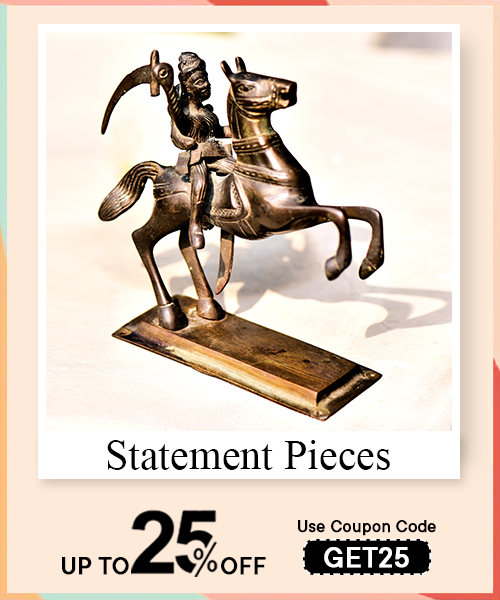Mithila Painting, also known as Madhubani art, is a traditional art form from the Mithila region of India and Nepal. It is known for its intricate patterns, bright colors, and themes inspired by nature, mythology, and daily life. These artworks are typically created using natural dyes and pigments on walls, paper, or canvas. The unique style reflects cultural values and has been passed down through generations.
Mithila art is characterized by its use of geometric patterns, bold outlines, and vibrant colors. Common motifs include animals, flowers, and scenes from Hindu epics. The artwork is symmetrical and often includes decorative borders. Traditionally, artists use natural elements like bamboo sticks or twigs as brushes and create colors from flowers, leaves, and clay.
Mithila Painting originated in the Mithila region, located in the present-day states of Bihar in India and parts of Nepal. This art form dates back to ancient times and is said to have been practiced by women to decorate walls during festivals and special occasions like weddings. Its origins are deeply rooted in cultural and religious traditions.
Traditional Mithila art uses natural materials like cow dung and mud to prepare the base. Artists use natural pigments from flowers, leaves, and other organic materials to create vibrant colors. Brushes are often handmade using twigs or bamboo sticks, while the surface might be walls, cloth, or handmade paper.
Mithila art commonly portrays themes from Hindu mythology, such as stories of Lord Krishna, Ramayana, and Mahabharata. It also includes depictions of nature, animals, and social events like weddings. The artwork often symbolizes cultural values, spiritual beliefs, and the connection between humans and nature.
Mithila paintings were traditionally created by women from the Mithila region. These artworks were often passed down from mother to daughter as part of cultural heritage. Over time, men have also started practicing this art form, and it has gained recognition globally.
Mithila Paintings hold cultural and religious significance. They are used to decorate homes during festivals and ceremonies, believed to bring prosperity and happiness. The artwork also serves as a medium to preserve the region’s traditions, mythology, and history, connecting modern generations to their roots.
Read More : How to Create Aesthetic Artwork: Tips, Materials, and Inspiration
Natural dyes play an important role in Mithila art. Colors are made from plants, flowers, and minerals. For example, yellow is derived from turmeric, black from soot, and red from vermilion or powdered bricks. These natural pigments are eco-friendly and give the artwork a unique, authentic appearance.
Mithila art is distinct due to its intricate patterns, bold outlines, and use of natural materials. Unlike other art forms, it often focuses on symmetrical designs and cultural symbolism. Themes of daily life and nature, combined with a lack of empty spaces filled with fine detailing, make Mithila art unique.
Mithila art has different styles, including Bharni (focused on vivid colors), Kachni (emphasizing fine lines), and Godna (inspired by tattoos). Each style has its unique features and is used to depict different themes, from mythology to nature and social issues.
Originally, Mithila art was created on walls and floors of mud houses. Today, it is also practiced on handmade paper, canvas, textiles, and other surfaces. This adaptability has helped the art form gain popularity in the modern world.

Mithila art has transitioned from being a decorative art for homes to a globally recognized art form. Modern artists use new materials like acrylic paints and create works on paper or canvas, making it accessible to art lovers worldwide. Despite these changes, the traditional motifs and techniques remain intact.
Today, Mithila art is used in various forms, including home decor, clothing, and stationery. It is also displayed in galleries and sold as artwork. This evolution has helped artists earn recognition and support while keeping the traditional craft alive.
Symmetry is a key element in Mithila art as it represents balance and harmony. The patterns are meticulously designed to create a sense of order and beauty. This focus on symmetry also highlights the precision and skill of the artist.
Read More : A Deep Dive into Challenges, Themes, and Evolution of Miniature Art
Women have played a significant role in preserving and promoting Mithila art. Traditionally, they painted walls and floors during celebrations, passing the skill to younger generations. Even today, women are among the leading artists of this traditional craft.
Popular motifs in Mithila art include peacocks, fish, lotus flowers, and religious symbols like the sun and moon. These motifs often have symbolic meanings, such as prosperity, love, and divinity. They add depth and cultural significance to the artwork.
Festivals like Diwali, Holi, and weddings are significant for Mithila art. These occasions inspire artists to create colorful designs and patterns to decorate their homes. The themes often reflect the celebrations and rituals associated with the events.
Nature is a central theme in Mithila art, with depictions of trees, animals, and flowers. These elements symbolize life, growth, and harmony. The intricate patterns and vibrant colors used to portray nature emphasize its beauty and importance.
Borders are a defining feature of Mithila art, framing the artwork and enhancing its visual appeal. They often include repetitive patterns like leaves, flowers, or geometric shapes, adding depth and detail to the overall composition.
Globalization has brought Mithila art to an international audience. Exhibitions, online platforms, and collaborations have increased its visibility, allowing artists to gain recognition and financial support. However, it also poses challenges in preserving traditional methods.
Yes, many modern artists use Mithila art to convey social messages. Themes like women’s empowerment, environmental conservation, and education are depicted through traditional patterns and styles, making the artwork both beautiful and meaningful.
Colors in Mithila art are not just decorative but also symbolic. For example, red signifies energy, yellow represents knowledge, and green symbolizes growth. The vibrant hues add life to the artwork while conveying deeper meanings.
Mithila artists face challenges like lack of financial support, competition with mass-produced art, and limited access to global markets. Efforts to promote and preserve the art form are crucial to overcoming these obstacles.
Mithila art is a community effort, reflecting shared traditions and values. Artists often collaborate, and the themes depict the collective experiences of the Mithila people. This sense of community strengthens the cultural identity of the region.
Learning Mithila art involves understanding its techniques, patterns, and themes. Workshops, online tutorials, and books are excellent resources for beginners. Practicing with simple designs and gradually mastering intricate patterns can help develop skills.
Animals in Mithila art often have symbolic meanings. For example, fish represent fertility and prosperity, while birds symbolize love and freedom. These depictions connect the artwork to cultural beliefs and natural elements.
Technology has enabled artists to reach a global audience through digital platforms. It has also introduced new mediums, like digital painting, while preserving the essence of traditional Mithila art.
Mithila art is important as it preserves cultural heritage and promotes traditional skills. It also supports artists by providing a livelihood and inspires modern art forms with its timeless beauty and meaningful themes.
Mythology plays a significant role in Mithila art, with many illustrations inspired by stories from Hindu epics like the Ramayana and Mahabharata. Common depictions include scenes of Lord Krishna, Goddess Lakshmi, and other deities. These representations not only showcase artistic skill but also reflect the cultural and spiritual values of the region.
Read More : Kalighat Paintings in Modern Interiors: Home Decor & Cultural Fusion
Mithila art promotes cultural awareness by highlighting the traditions, beliefs, and stories of the Mithila region. Its unique motifs and vibrant style educate people about the community’s heritage. Exhibitions, workshops, and art festivals further help in spreading knowledge about this traditional art form to a global audience.















